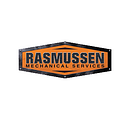HVAC Ionizer : How They Work
It’s no secret that indoor air quality is important. It effects the health, well-being and comfort of the people working in your facility. While air monitoring systems have improved over the years, what is available in terms of air cleaning systems? Today we are going to focus on one type of air cleaning system: An HVAC Ionizer.
How Do HVAC Ionizers Work?
The basic principle behind an HVAC ionizer is to release charged ions into the air stream. Charged ions must either give up or take in an electron to become neutral. These charged ions are attracted to particles floating in the air and will attach themselves to the particles.
Then, one of two things will happen depending on the particle they attach themselves too.
- For some organic particles, these ions will actually breakdown the pollutant. They can do this by removing the hydrogen atoms from viruses’, bacteria and mold which results in the death of these pathogens.
- The second thing that can happen is the ions will attach themselves to a particle but not break down the pollutant. These create positively and negatively charged particles which will bond to particles of opposite polarity. These particles continue to bond to each other creating clumps. Because this clumping increases the particles size, they will either fall out of the air or be more easily caught in your filters.
Bipolar HVAC Ionizers
Bipolar Ionizers (or needlepoint bipolar ionizer) produce both negative and positive ions. The positive ions are referred to as “cation” and the negative ions are called “anions”.
These ions are created through a process called corona discharge. By using electricity to charge a needlepoint they are able to strip electrons from molecules. This creates both positive and negative ions which can attach to dust, dander, smoke, bacteria, viruses, mold, VOCs (volatile organic compounds) and more.
An Emerging Technology
According to the EPA : “This is an emerging technology, and little research is available that evaluates it outside of lab conditions. As typical of newer technologies, the evidence for safety and effectiveness is less documented than for more established ones, such as filtration… If you decide to use a device that incorporates bipolar ionization technology, EPA recommends using a device that meets UL 2998 standard certification (Environmental Claim Validation Procedure (ECVP) for Zero Ozone Emissions from Air Cleaners).”
COMMON CAUSES OF POOR INDOOR AIR QUALITY
Some of the most common cause of poor indoor air quality include:
- Inadequate ventilation caused by a lack of outdoor air circulation and HVAC systems not effectively distributing air .
- Chemical contaminants (volatile organic compounds) from indoor sources, such as adhesives, carpeting, upholstery, and manufactured wood products not being ventilated properly.
- Chemical contaminants from outdoor sources such as motor vehicle exhausts, plumbing vents, and building exhausts can sneak in through poorly located openings.
- Biological contaminants such as bacteria, molds, or pollen are another common cause. Sources of this may include stagnant water found in humidifiers, drain pans, and insect or bird droppings.
Types of Pollutants
The EPA’s list of some common pollutants to be aware of are below:
Environmental: Tobacco smoke, lighted cigarettes, cigars and pipes
Combustion Contaminants: Furnaces, generators, gas or kerosene space heaters, tobacco products, outdoor air and vehicles
Biological Contaminants: Wet or damp materials, cooling towers, humidifiers, cooling coils or drain pans, damp duct installation or filters, condensation, re-entrained sanitary exhausts, bird droppings, cockroaches or rodents, dust mites on upholstered furniture or carpeting, or body odor
Volatile Organic Compounds (VOCs): Paints, stains, varnishes, solvents, pesticides, adhesives, wood preservatives, waxes, polishes, cleaners, lubricants, sealants, dyes, air fresheners, fuels, plastics, copy machines, printers, tobacco products, perfumes and dry cleaned clothing
Formaldehyde: Particle board, plywood, cabinetry, furniture, fabrics
Soil Gases: Soil and rock (radon), sewer drain leaks, dry drain traps, leaking underground storage tanks and land fills
Pesticides: Termiticides, insecticides, rodenticides, fungicides, disinfectants and herbicides
Particles and Fibers: Printing, paper handling, smoking and other combustion, outdoor sources, deterioration of material, construction/renovation, vacuuming and insulation.
Have HVAC Ionizer Questions?
We are happy to help answer any of your HVAC ionizer questions. With over 50 years in the business we know HVAC systems and can help you make an informed decision. Call us at 1–800–237–3141 or email us at sales@rasmech.com.
Originally published at https://www.rasmech.com on November 3, 2021.
